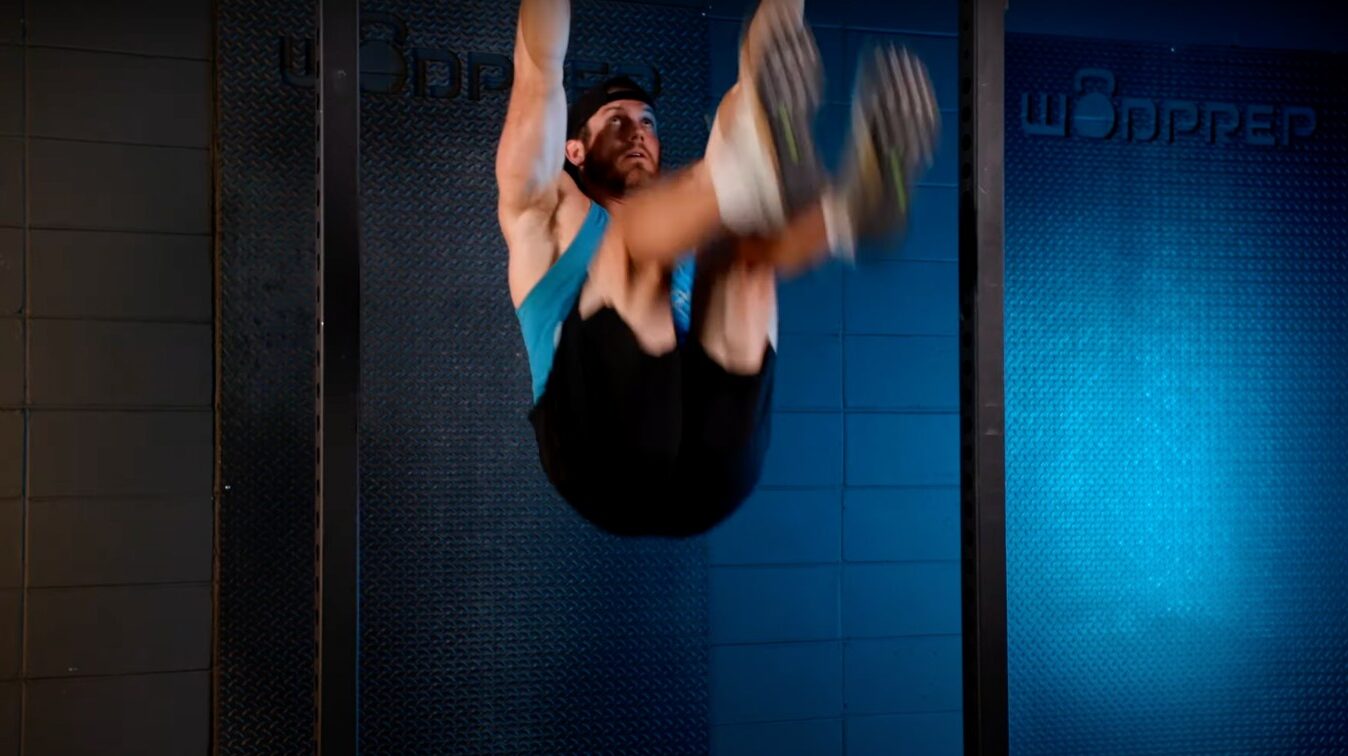I'm here to help you conquer the elusive toes-to-bar movement. If you've been frustrated with your toes-to-bar progressions or finding it challenging to nail those T2B reps, stick around because this video is dedicated to addressing the most significant faults that might be holding you back.
By the end of this article, you'll be armed with the knowledge to take your toes-to-bar game to the next level and string together those unbroken sets effortlessly.
But before we dive into the nitty-gritty of mastering the toes-to-bar, if you're eager to up your game, I've got something special for you.
I'm offering a free resource, the "Ultimate Guide to Toes-to-Bar." Just head over to wodprep.com/guide/toes-to-bar/ to grab your copy and take your training to new heights. Alright, now let's jump into the training!
The Four Major Faults of Toes-to-Bar (T2B) and How to Fix Them

The Death Swing or Tarzan Swing:
One of the most common blunders I see athletes making is the "Death Swing" or what I sometimes call the "Tarzan Swing." This occurs when you focus on using your legs to swing or kip, rather than initiating the movement from your core, hips, and shoulders.
Remember, the power of kipping comes from these core muscles, not your legs. Before tackling kipping toes-to-bar, develop a strong foundation in the kip swing.
Work on movements like beat swings or kipping pull-ups to ensure you're using the right muscle groups.
Lack of Lat Engagement:
Engaging your lat muscles is crucial for a successful toes-to-bar. Your lats run from your armpits down the sides of your body, and they play a significant role in elevating your shoulders during the kip.
Many athletes fail to activate their lats, relying only on their core and legs. To avoid this, practice activating your lats during your kip by pushing down on the bar when in the hollow position. This creates space for your knees and feet to approach the bar.
Head Positioning:
Don't underestimate the importance of head positioning. Many athletes have a tendency to look down at the ground when attempting toes-to-bar or any overhead movement. This not only strains your neck but also limits your range of motion.
Instead, maintain a neutral head position or even slightly tilt your head up. This small adjustment can make a world of difference, allowing you to lift your torso, knees, and feet more effectively.
Insisting on Straight Legs:
While gymnastic coaches often emphasize perfectly straight legs during toes-to-bar, this isn't an absolute requirement for success. If hamstring flexibility is an issue for you (which is common), it's better to work with what you have.
Many athletes find success with the "knee tuck and flick" method. By bending your knees, you create a more efficient path for your feet to touch the bar.
Remember, it's about finding a balance between form and function that works for your body.
Unlocking Your Toes-to-Bar Potential:
By addressing these four major faults, you'll be well on your way to mastering the art of toes-to-bar. Remember, it's not about achieving picture-perfect form from the start, but rather finding the technique that works for you.
If you're determined to hit those impressive unbroken sets of 20+ toes-to-bar, don't miss out on my free training guide, the "Ultimate Guide to Toes-to-Bar," available at wodprep.com/guide/toes-to-bar/
Before I wrap up, I'd love to hear from you:
If you found this article helpful, show some love by hitting that thumbs up button, and if you're new here, remember to subscribe for more insightful content. Keep training hard, and remember that mastering the toes-to-bar is within your reach!
